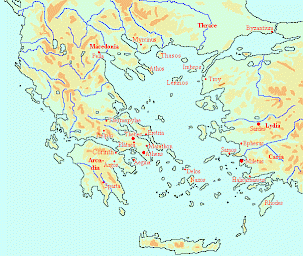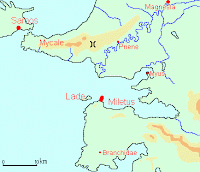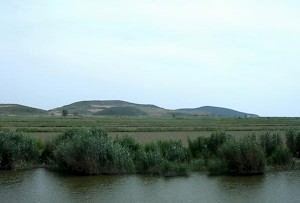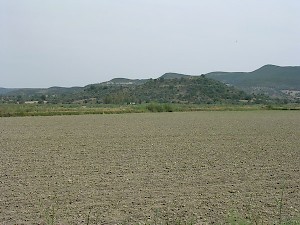Herodotus, bk 6, logos 17
Herodotus of Halicarnassus (c.480-c.429 BCE): Greek researcher, often called the world's first historian. In The Histories, he describes the expansion of the Achaemenid Empire under its kings Cyrus the Great, Cambyses, and Darius I the Great, culminating in Xerxes' expedition to Greece (480 BCE), which met with disaster in the naval engagement at Salamis and the battles at Plataea and Mycale. Herodotus' book also contains ethnographic descriptions of the peoples that the Persians have conquered, fairy tales, gossip, and legends.
Persian reconquest of Ionia (6.1-42)

Book Six opens with the arrival of Histiaeus at Sardes, something that Herodotus - who holds Histiaeus responsible for the outbreak of the Ionian Revolt - has already announced in the preceding logos. Histiaeus cannot deceive Artaphernes, who compares him to the maker of a shoe that Aristagoras has put on. The man from Miletus flees to his home town, but his compatriots and the other Ionians mistrust him, too. Even his story that he had ignited the revolt to prevent mass deportation does not help him, and he is forced to leave Miletus and then, with the help of eight warships, starts a career as a privateer, attacking grain ships in the Bosphorus.

As we have seen, Miletus is left isolated. However, the Persians cannot take it as long as the Ionians can supply it from overseas. So, a Phoenician fleet sails into the Aegean and occupies Lade, a small island in front of the harbor of Miletus. After winning a naval battle, the Persians can invest Miletus by land and sea. Five years after Aristagoras' revolt, the greatest city in Ionia is reduced to slavery. Next year, the last Greek resistance is broken; several rebels escape to Sicily, where they found Zancle (modern Messina). Histiaeus surrenders and is impaled by Artaphernes. The head of the deceitful author of the Ionian revolt is send to Darius.

This logos continues with a series of remarks on Miltiades, an Athenian adventurer who had left his home town to escape the tyranny of Hippias and had established a small monarchy for himself at the entrance of the Hellespont. Herodotus gives an intriguing description of his career. At the approach of the Phoenician fleet, Miltiades flees back to Athens.
Comment
Herodotus does not name the Persian commanders at Lade, but Datis seems to have been one of them. Because there is a synchonism with a religious festival, the naval engagement off Lade can probably be dated on 20 October 494; Miletus fell after a siege of a month. It was completely destroyed. The survivors left the old site and rebuilt their town a bit more to the north.

Miltiades, whose revenge was still to come, had sympathized with the Ionian revolt. This is proven by the coins he had issued, showing the lion of Miletus. If we are to believe Herodotus -who may be mistaken at this point-, Miltiades had already proposed a rebellion a decade and a half before: when Darius had been fighting his disastrous Scythian campaign, the tyrant of the Chersonese had suggested to destroy the bridge across the Danube, cut off the great king's lines of retreat and throw off the Persian yoke (above). However, at that occasion, Histiaeus' proposal to save Darius had prevailed.
This Miltiades once had had to cope with a Scythian invasion (c.495 BCE). After defeating these enemies, he dedicated his helmet to the god Zeus. It is currently exhibited in the Museum at Olympia.